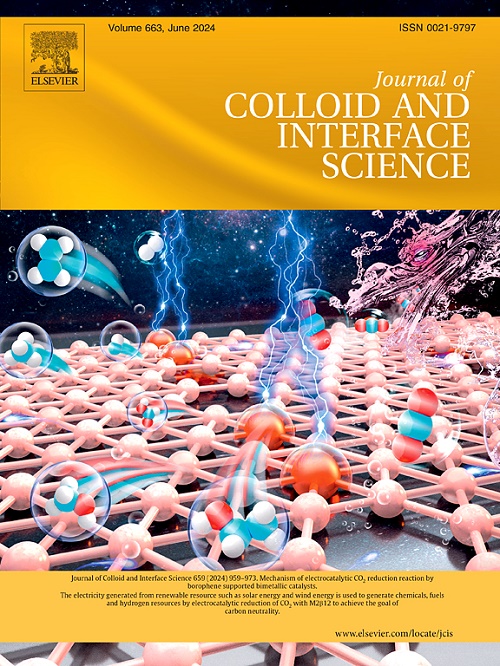N/ s掺杂碳修饰Fe1-xS磁黄铁矿作为锂硫电池的协同电催化剂。
IF 9.7
1区 化学
Q1 CHEMISTRY, PHYSICAL
引用次数: 0
摘要
合理设计有效的阴极主体材料是解决锂硫电池多硫化物穿梭严重、转化缓慢等问题的有效途径。然而,硫的氧化还原反应不同于传统的“摇椅”型电池,涉及一个繁琐的相变过程,因此单组分催化剂无法在整个氧化还原过程中持续稳定地提高反应速率。本文提出了一种由掺杂N/ s的多孔碳球(Fe1-xS@NSC)修饰的磁黄铁矿Fe1-xS催化剂组成的杂化物作为一种新型硫宿主,协同促进多硫化物的吸附和氧化还原催化转化。在这种混合物中,NSC骨架为多硫化物的物理固定提供了优异的导电性和丰富的吸附位点;磁性黄铁矿Fe1-xS纳米颗粒促进了Li2S2到Li2S的快速转化反应,具有很强的吸附和催化转化作用。在0.2 C条件下(1 C = 1675 mAh g-1),最优LSB具有971 mAh g-1的高初始容量,在100次循环后保持率高达75%。该研究为优化新型过渡金属硫化物/多孔碳基复合材料在高性能锂硫电池中的高效吸附和催化转化提供了新的途径。本文章由计算机程序翻译,如有差异,请以英文原文为准。

Magnetopyrite Fe1−xS modified with N/S-doped carbon as a synergistic electrocatalyst for lithium-sulfur batteries
Rational design of effective cathode host materials is an effective way to solve the problems of serious shuttle and slow conversion of polysulfides in lithium-sulfur batteries (LSBs). However, the redox reaction of sulfur differs from conventional “Rocking chair” type batteries and involves a cumbersome phase transition process, so a single-component catalyst cannot consistently and steadily enhance the reaction rate throughout the redox process. In this work, a hybrid composed of magnetopyrite Fe1−xS catalyst-modified with N/S-doped porous carbon spheres (Fe1−xS@NSC) is proposed as a novel sulfur host to synergistically promote the adsorption and redox catalysis conversion of polysulfides. In this hybrid, the NSC skeleton provides excellent electrical conductivity and abundant adsorption sites for the physical immobilization of polysulfides; the magnetopyrite Fe1−xS nanoparticles promote the fast conversion reaction from Li2S2 to Li2S, affording strong adsorption and catalytic conversion. The optimal LSB with Fe1−xS@NSC manifests a high initial capacity of 971 mAh g−1 at 0.2 C (1 C = 1675 mAh g−1) and a retention rate of up to 75 % after 100 cycles. This work can provide a new approach for rationalizing the novel transition metal sulfide/porous carbon-based composite hosts with efficient lithium polysulfides (LiPSs) adsorption and catalytic conversion in high-performance lithium-sulfur batteries.
求助全文
通过发布文献求助,成功后即可免费获取论文全文。
去求助
来源期刊
CiteScore
16.10
自引率
7.10%
发文量
2568
审稿时长
2 months
期刊介绍:
The Journal of Colloid and Interface Science publishes original research findings on the fundamental principles of colloid and interface science, as well as innovative applications in various fields. The criteria for publication include impact, quality, novelty, and originality.
Emphasis:
The journal emphasizes fundamental scientific innovation within the following categories:
A.Colloidal Materials and Nanomaterials
B.Soft Colloidal and Self-Assembly Systems
C.Adsorption, Catalysis, and Electrochemistry
D.Interfacial Processes, Capillarity, and Wetting
E.Biomaterials and Nanomedicine
F.Energy Conversion and Storage, and Environmental Technologies

 求助内容:
求助内容: 应助结果提醒方式:
应助结果提醒方式:


